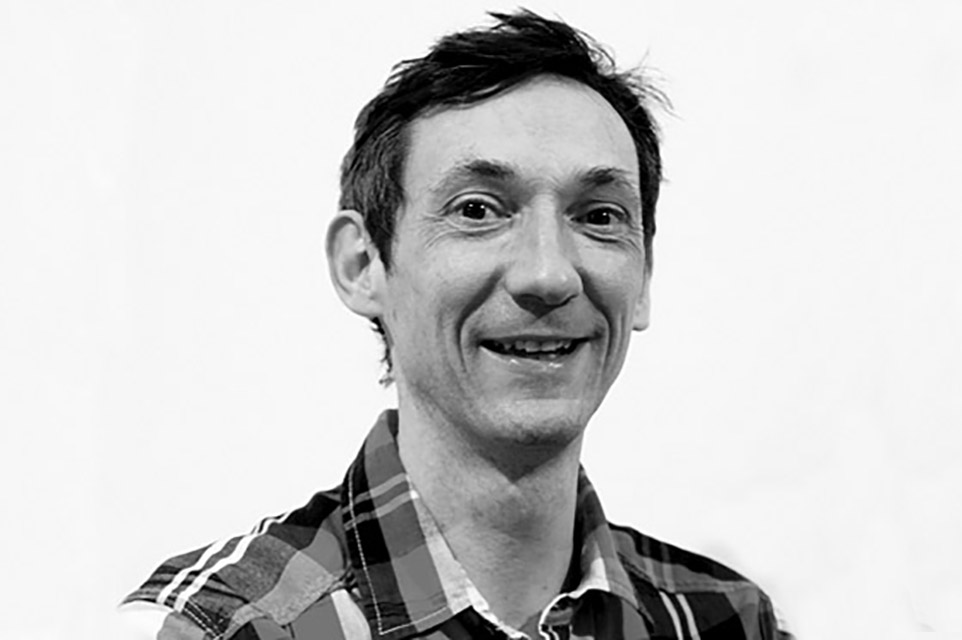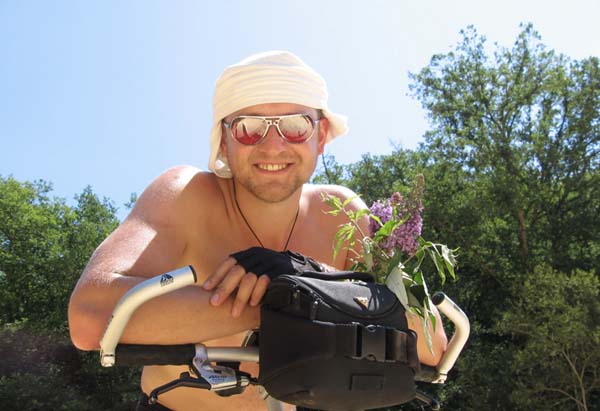Adventure: Five months to Istanbul - part one


Words: Peter Baker
My plan was to go around the world for two years, starting with a bicycle ride from London to Istanbul. In preparation, I’d given my bosses four months’ warning I was leaving and then finished at my job six weeks before setting off.
I used those six weeks to go through every possession I owned, throwing (or giving) things away and leaving the rest with trusted friends. I then visited the important people in my life, tied up my loose ends and threw an enormous going-away party.
I didn’t know much about bicycles, so decided to undertake the trip with the hybrid on which I’d been commuting to work (and bought two panniers and a one-man tent to strap to it). As for the practicalities, my assessment was as follows:
1) There’s the ground
2) There’s a bicycle
3) You’ve got a general idea what Europe looks like
Get The Leadout Newsletter
The latest race content, interviews, features, reviews and expert buying guides, direct to your inbox!
4) Head south-east and keep an eye on road signs
How hard could it be?
1: Kent
31 May
Heading south from my house in north London, I took a route I know like the back of my hand: freewheeling down Hewitt Road; hanging a right onto Green Lanes; down through Clissold Park, filled with a springtime glory of picnics and ballgames; and then on into central London.
This time instead of turning right towards the West End or left into the City – where my now ex-colleagues still work – I went straight down, across London Bridge and into the suburbs beyond. An hour after crossing the Thames the urban landscape gave way to the rolling hills of Kent. Istanbul, here I come.
That first afternoon I had three important learning experiences at the same time: becoming massively dehydrated; having no idea where I’d camp; and being reminded that shops outside the city close at six (so I didn’t have any food).
With the light failing and hunger’s pangs beginning to gnaw, I stopped beside a likely-looking meadow to eye it up as a camping spot. A nearby householder, cutting bushes in his back garden, told me to go ahead. It was seven o’clock. I was just outside Rochester.
Said householder turned out to be the local doctor. After I’d set up my tent he invited me in for dinner. He and his family were very impressed by my cycling-to-Turkey scheme. I might be dining out on that one a lot. His wife had cooked a rack of chicken wings on a whim, but her two sons had shown no interest. As I gratefully tucked in she looked me in the eye and declared my arrival to be destiny. The idea rather appealed.
For the following two days I made my way across Kent, and on the afternoon of the second day reached the south coast at Dover.
2: Normandy
6 June
559 km
After writing that last email I made my way to the port and boarded a ferry to France. I spent that afternoon and the following morning in Calais, then began cycling south into Normandy.
I took the opportunity to stop at Agincourt, site of the battle where Henry V and 6,000 Welsh and English lads snotted the French in 1415. When the locals asked where I was heading, I felt mildly embarrassed to admit I was going out of my way to visit the place where the cream of their nobility had been massacred. Not to worry. They were very intellectual about it. ‘A culturally iconic moment similar to our storming of the Bastille,’ I was told.
That evening I watched the sunset while eating a picnic of Camembert and salami, and listening to Beethoven’s Ninth with the last of the power in my iPod. As darkness fell tendrils of mist crept from a nearby river and filled the valley below. Mesmerised, I picked my way down to a fence at the bottom of the field to get a closer look. A grizzled old French fellow appeared at my elbow. ‘La nature,’ he said, gesturing with his huge weathered hand, ‘c’est si magnifique.’
I’ve just had my first bad patch. It started with a thunderstorm, a flat tyre, changing said tyre in the rain, having the new tyre burst (psheet it went), then running across town – drenched and frantic – to reach the bicycle shop before it closed, all with wet feet and an empty belly.
The next day a gale blew in my face from dawn till dusk while I crawled along at a miserable nine kilometres per hour. That was really unpleasant. I cheered myself up by camping in a dark forest with deer running around. That was really satisfying.
I’ve reached Rouen, ancient capital of the Normans. The old city seethes with history. Narrow alleys lead to cobbled squares where faded cupids piss into clear pools. Walls carved after the Black Death are filled with manacles and skulls, and decades-spun cobwebs are an arm’s length away. It’s chock full of amazing churches. The cathedral is astounding.
Legs getting stronger. Rapidly developing a tan.
3: Chartres
13 June
904 km
I first learned of Chartres Cathedral from Kenneth Clark’s Civilisation series about the history of European art. The cathedral was completed in the year 1220 and is 90 kilometres south-west of Paris. Lord Clark characterises its construction as one of the crowning architectural achievements of Western civilisation.
I’ve been to a few of Europe’s grandest churches in my time; although, as you can tell, I was expecting Chartres to be pretty special. Nonetheless, the sight of it rising from the French agricultural plains (you can see it from miles away) and totally dominating the town itself didn’t prepare me for what I would find inside.
My eyes were attuned to the bright sunny morning and it took them a few moments to re-adjust. This church is dark – very dark – with hundreds of fantastically complex stained-glass windows alongside three great roses of colour. A symphony in stone. A cry of affirmation by now-forgotten artists. Gloomy. Foreboding. Gothic.
Jaw-dropping.
Following my visit to the great temple, I cycled south for two days until I reached the city of Orléans in the valley of the River Loire. There I turned west and, today, I’m in the delightful town of Blois (pronounced: blwah). I have decided to discard the word bicycle in favour of the sexier term ‘cyclatron’. I’ve also awarded my cyclatron a name. Henceforth, she shall be known as ‘Nelly’.
Yesterday, while pedalling along with Nelly and smothered in factor 15, my arms and legs became coated in the small black insects which hang out beside the river. Some of them started to have sex on me. Cheeky little blighters.
4: The Loire Valley
18 June
1,174 km
Being a Tintin fan, I always understood that the comic book hero reporter was Belgian. However, I liked to imagine that his best friend, Captain Haddock, was English. I’ve now visited the real Marlinspike Hall (also known as Château de Cheverny) where Captain Haddock lived. Tintin was from Brussels and Captain Haddock, it turns out, resided in the valley of the River Loire.
Château de Cheverny is set among exquisite gardens of manicured lawns and venerable trees. In addition to its physical magnificence and substantial Tintin exhibition, one of the château’s notable features is the pack of 100 hunting dogs its owners keep. During my visit, I witnessed them being fed.
Feeding a hundred lean, mean and hungry hunting dogs requires 90 kilograms of animal parts and a prodigious quantity of biscuits, which equates to a metal tray eight metres long and one metre wide, piled with food. When the kennel doors are opened, the tray vanishes to be replaced by a heaving mound of white and brown fur. When it reappears, two minutes later, it’s been licked clean. I feel pretty sorry for the stag.
The morning I cycled to the château I’d been struck by the lush and sunlight-filled forest paths I was passing. So, the next day, I postponed my journey west, left my bags at the campsite, grabbed a compass and headed into the forest for some off-roading.
That afternoon, in a village called Bracieux, I came across a restored medieval barn housing an exhibition by local artists. The only other person there was an elderly lady called Janine Desmars. We struck up a conversation during which she informed me that her hobby was to write poetry (in French) and send it to various world leaders. I was initially sceptical, until she produced replies from Tony Blair and Jean-Pierre Raffarin (former Prime Minister of the Fifth Republic).
Amusingly, as I cycled down an overgrown path on my way to the city of Tours yesterday, I came across a couple ‘getting biblical’ on the river bank. ‘Pardon! Pardon! Bonjournay!’ I yelled as Nelly and I whizzed past. I reckon they were having a very bon journée.
5: The Atlantic Coast
25 June
1,624 km
I’ve been looking at castles. Most of the châteaux along the Loire valley are basically pleasure palaces built by the French aristocracy during the Renaissance. Visually they’re stunning but, fortification-wise, a bit girly: not designed to cope with battering rams or rapacious armies.
Eight days ago at the town of Chinon, on the Loire’s south bank, and 40 kilometres after Tours, I came across a château that represented a very different brand of military architecture. The château at Chinon is a full-blooded 400-metre-long medieval fortress sitting atop a rocky spur and contains three separate compounds and an underground tunnel system.
Two days later, at the Angers campsite I met a bloke called Gerald, who was also having a solo cycling adventure. Gerald had been working at organic farms in France and was heading back to England to serve organic food at music festivals (you get the idea). He took the whole cyclatron business much more seriously than Nelly and me, and had bits of equipment we didn’t even know existed, such as a ‘micro pump’ only slightly bigger than a mascara brush.
Angers was the last city on the Loire I visited. After that I turned south-west and, yesterday, hit the Atlantic coast at La Rochelle, which looks over the Bay of Biscay and is filled with fishing boats, seafood and tourists. I’m resting up for a couple of days before heading south to find a beach.
I don’t tan well, or easily, but four weeks of being outside all day seems to be doing the trick. I’m slowly turning a rather fetching golden colour and developing freckles.
Navigation
I’d made the strategic decision to follow the Romance, rather than the Germanic, route across Europe, which meant going anti-clockwise, rather than clockwise, around the Alps.
I’d also decided to avoid the big cities (because, on a bicycle, they’re a drag) and there were two items on my ‘must-see’ list: Chartres Cathedral and the Viaduc de Millau. In addition, I had visits to pay in southern France, northern Italy and Slovenia.
Apart from that, I had no idea which route I’d follow. So I looked in my guidebook, picked spots which seemed interesting and headed in their direction.
I dealt with navigation one step at a time. I found Dover by reading road signs. Then, after crossing the Channel, I looked in the big road map book of France I’d bought, found the page with Calais on it and worked out which road would take me to Boulogne.
After that it was a step-by-step process. Travelling one town at a time, I made my way across that first page, then turned to the next one and repeated the procedure. As the weeks went by, page following page, I made my way across France, and then Europe. It was enormously satisfying.
Peter Baker's book, The Jolly Pilgrim, is available from Amazon. For more information on the author and the book, go to the Jolly Pilgrim website.


Thank you for reading 20 articles this month* Join now for unlimited access
Enjoy your first month for just £1 / $1 / €1
*Read 5 free articles per month without a subscription

Join now for unlimited access
Try first month for just £1 / $1 / €1

Nigel Wynn worked as associate editor on CyclingWeekly.com, he worked almost single-handedly on the Cycling Weekly website in its early days. His passion for cycling, his writing and his creativity, as well as his hard work and dedication, were the original driving force behind the website’s success. Without him, CyclingWeekly.com would certainly not exist on the size and scale that it enjoys today. Nigel sadly passed away, following a brave battle with a cancer-related illness, in 2018. He was a highly valued colleague, and more importantly, an exceptional person to work with - his presence is sorely missed.
-
 Gear up for your best summer of riding – Balfe's Bikes has up to 54% off Bontrager shoes, helmets, lights and much more
Gear up for your best summer of riding – Balfe's Bikes has up to 54% off Bontrager shoes, helmets, lights and much moreSupported It's not just Bontrager, Balfe's has a huge selection of discounted kit from the best cycling brands including Trek, Specialized, Giant and Castelli all with big reductions
By Paul Brett
-
 7-Eleven returns to the peloton for one day only at Liège-Bastogne-Liège
7-Eleven returns to the peloton for one day only at Liège-Bastogne-LiègeUno-X Mobility to rebrand as 7-Eleven for Sunday's Monument to pay tribute to iconic American team from the 1980s
By Tom Thewlis